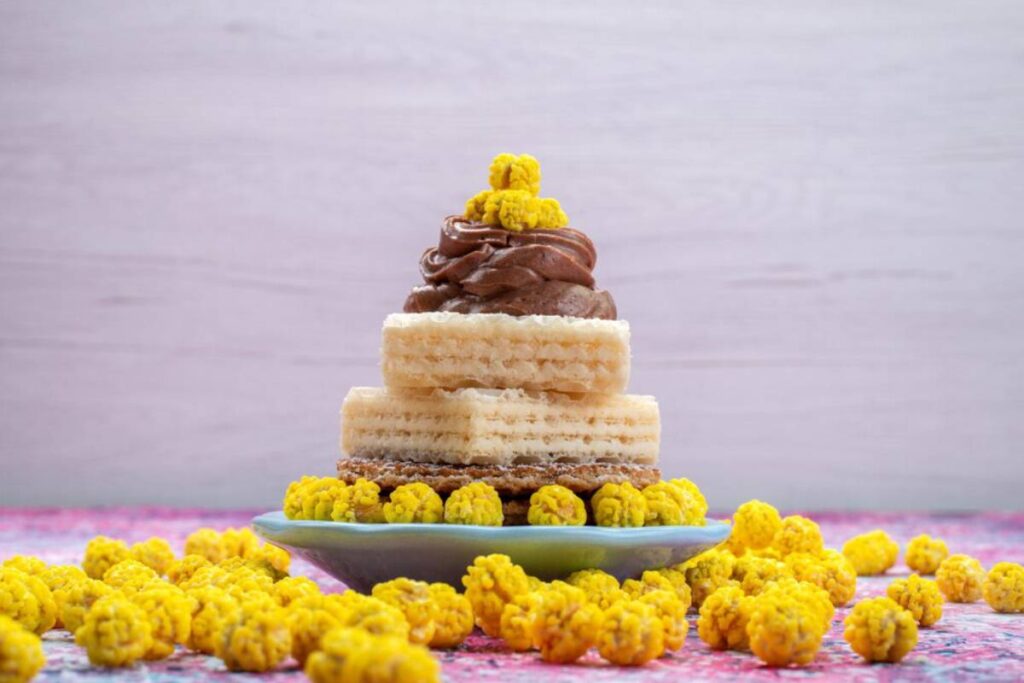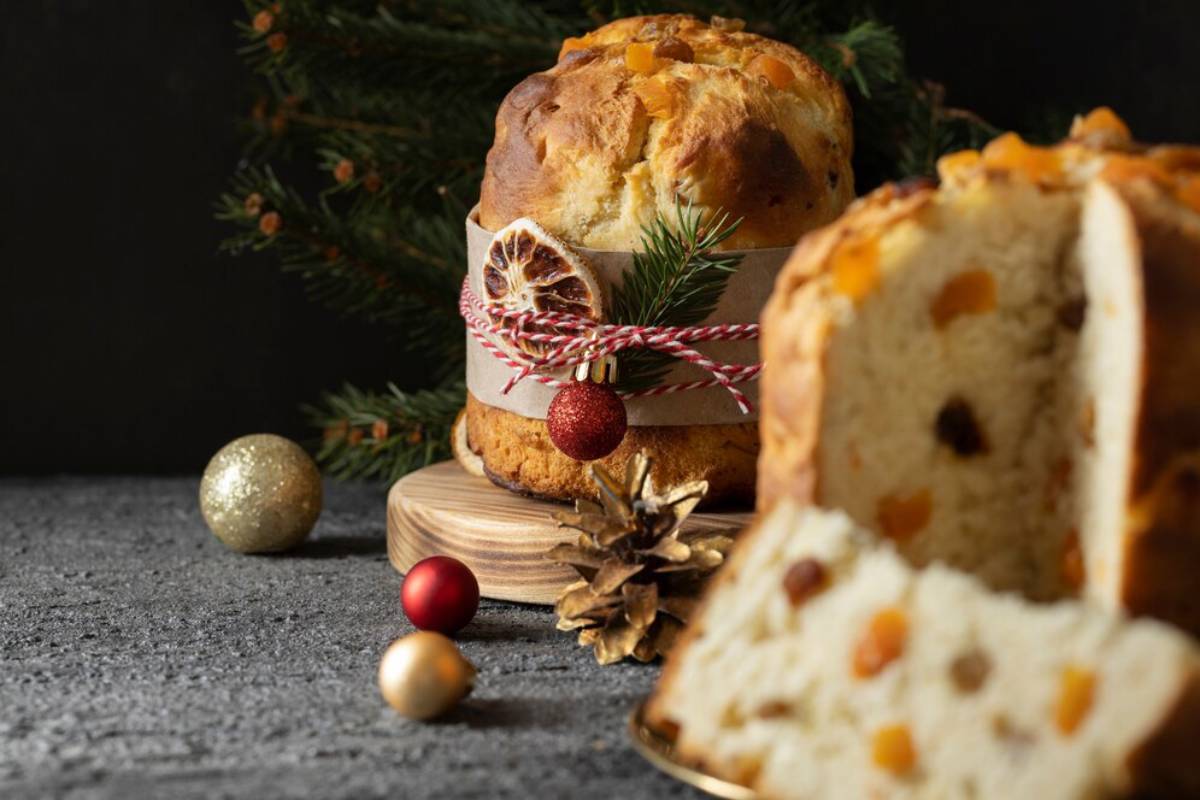The Food Blog

Festival Sweets: Holiday Desserts from Around the World
Holidays around the world are often marked by light, music, tradition—and, most universally, sweets. Whether it’s a plate of honey-drenched baklava at Eid or buttery shortbread at Christmas, international holiday sweets are far more than just desserts. They’re edible expressions of joy, memory, and cultural identity.
In every corner of the globe, people mark the changing of seasons, religious milestones, and family reunions with food. And at the heart of these celebratory spreads? Festive pastries and sugary treats passed down through generations. These confections aren’t just indulgent—they’re meaningful, symbolic, and often highly regional.
In this blog, we take you on a culinary tour of global desserts served during holidays and festivals—from crispy, syrupy delights in the Middle East to rich, fruit-filled loaves in Europe and vibrant, colourful treats in Asia and the Americas.
Why Holiday Desserts Matter Culturally
While every culture has its year-round sweet favourites, festival treats hold a special place for several reasons:
1. Symbolism
- Sweetness represents good fortune, abundance, and the hope of a “sweet year” ahead.
- Ingredients like nuts, spices, or dried fruits often symbolise prosperity, fertility, or renewal.
2. Ritual
- Many holiday sweets are prepared in specific ways or on specific days, turning baking into a communal tradition.
- Recipes are often guarded within families, passed from grandparents to grandchildren.
3. Togetherness
- Sharing sweets is a universal gesture of goodwill, whether during Lunar New Year, Diwali, or Christmas.
These desserts connect people to place, time, and each other.
International Holiday Sweets You Need to Know
Here’s a taste of the world’s most iconic festival sweets—each with its own history, texture, and festive meaning.

1. Panettone – Italy (Christmas & New Year)
What It Is: A tall, domed sweet bread studded with raisins, candied orange peel, and sometimes chocolate.
Why It’s Special:
- Originally from Milan, panettone is now a symbol of Italian Christmas.
- It’s often enjoyed with coffee in the morning or wine after dinner.
- Gifting a beautifully wrapped panettone is a cherished seasonal tradition.
Modern Twist: Artisanal versions include pistachio cream, pear and chocolate, or exotic spices.
2. Maamoul – Middle East (Eid, Easter, and Christmas)
What It Is: A shortbread-like pastry filled with dates, walnuts, or pistachios, often moulded into intricate patterns.
Cultural Context:
- Found in Syria, Lebanon, Jordan, and Egypt.
- Maamoul marks both Muslim and Christian holidays, symbolising peace and hospitality.
Tradition: Families gather in the days leading up to the holiday to bake large batches and share them with neighbours.
Truly a star among global desserts for its delicate texture and ritual preparation.
3. Mochi – Japan (New Year / Lunar Festivals)
What It Is: Glutinous rice pounded into a soft, chewy cake, sometimes filled with sweet red bean paste.
Why It Matters:
- Mochi-making (mochitsuki) is a New Year tradition meant to bring good luck.
- It represents strength, unity, and a fresh start.
Variations:
- Sakura mochi (spring)
- Kusa mochi (with mugwort, in spring)
- Ice cream mochi (modern fusion favourite)
Festival note: Mochi features in nearly every Japanese seasonal celebration.
4. Kourabiedes – Greece (Christmas)
What It Is: Almond shortbread cookies coated in snowy layers of icing sugar.
Symbolism:
- Their crescent shape nods to past Ottoman influence.
- Powdered sugar represents purity and festive snow.
How They’re Served: Usually with coffee or liqueur after Christmas dinner.
Cultural Note: Often made in bulk to gift to friends, neighbours, and visiting relatives.
5. Besan Ladoo – India (Diwali and Festivals)
What It Is: A round sweet made from roasted gram flour, ghee, sugar, and cardamom, often decorated with nuts.
Why It’s Loved:
- Simple to make but deeply flavourful.
- Represents prosperity, sweetness, and warmth.
Wider Festival Context:
- Part of a larger platter (mithai thali) offered during Diwali, Holi, and family weddings.
- Each region in India has its own variation of festival ladoos.
A must-try staple of plant-based global cuisine and festive indulgence alike.
6. Pavê – Brazil (Christmas and New Year)
What It Is: A chilled layered dessert made with biscuits, custard, fruit, and cream.
Family Favourite:
- Brazil’s answer to tiramisu, often flavoured with chocolate, coffee, or pineapple.
- Always homemade, always the highlight of the Christmas dessert table.
Why It Endures: It’s easy to prepare in hot weather and can be endlessly customised.
7. Sufganiyot – Israel (Hanukkah)
What It Is: Deep-fried doughnuts filled with jam or custard, then dusted with icing sugar.
Religious Significance:
- Celebrates the miracle of oil in the Hanukkah story.
- Eaten to commemorate the sacred oil that lasted eight days.
Modern Takes: Gourmet sufganiyot now come filled with dulce de leche, pistachio cream, or even savoury fillings.
8. Galette des Rois – France (Epiphany, January 6th)
What It Is: A buttery puff pastry tart filled with almond frangipane.
Fun Tradition:
- A small charm (fève) is hidden inside. The person who finds it becomes “king” or “queen” for the day.
Cultural Reach: Enjoyed across Francophone countries, from France to Quebec to parts of Switzerland.
Among the most refined festive pastries, both in taste and presentation.
9. Tangyuan – China (Lantern Festival)
What It Is: Sweet glutinous rice balls filled with sesame paste or red bean, served in warm syrup.
Symbolism:
- Round shape represents family unity and completeness.
- Eaten during the final day of Lunar New Year celebrations.
Festive Feel:
- Often made together with family members.
- Flavours range from traditional to modern (peanut butter, chocolate, etc.).
10. Christmas Pudding – United Kingdom (Christmas)
What It Is: A dense steamed pudding made with dried fruits, spices, suet (now often replaced with vegan alternatives), and a splash of brandy.
Tradition:
- Made weeks ahead of Christmas and “fed” with brandy
- Often served flaming, with brandy butter or custard
Fun Fact: Stirring the pudding is meant to bring good luck—each family member takes a turn.
A beloved symbol of British international holiday sweets, steeped in tradition and nostalgia.
How Modern Trends Are Shaping Traditional Sweets
As dietary preferences evolve, many of these treats are being adapted to meet vegan, gluten-free, or lower-sugar needs.
Examples:
- Vegan maamoul made with coconut oil
- Gluten-free panettone with rice flour
- Plant-based Christmas puddings without suet or dairy
These modern interpretations maintain the essence of tradition while making festival vegan food and allergy-friendly baking more inclusive.
Tips for Experiencing Global Desserts Abroad or at Home
1. Join a Cooking Class
Many cultural centres or travel tours offer dessert-making workshops during local festivals.
2. Visit International Bakeries
Explore communities near you that specialise in world pastries—often more authentic than commercial imports.
3. Host a Global Dessert Night
Recreate a few small-batch versions of traditional sweets at home and invite friends to taste and learn.
4. Time Your Travel
Plan trips around holiday seasons—like Diwali in India or Lunar New Year in Vietnam—for the most immersive food experience.

A Celebration in Every Sweet
Whether it’s a puff pastry eaten by kings or a humble rice ball passed around a table, global desserts offer a delicious glimpse into how cultures celebrate joy, gratitude, and togetherness. These international holiday sweets are more than confections—they are keepsakes of memory, identity, and celebration.
Take action today: Seek out new festive pastries to try, share recipes with friends across cultures, or plan your next trip around a sweet celebration. In every corner of the world, there’s a dessert waiting to tell you a story.









